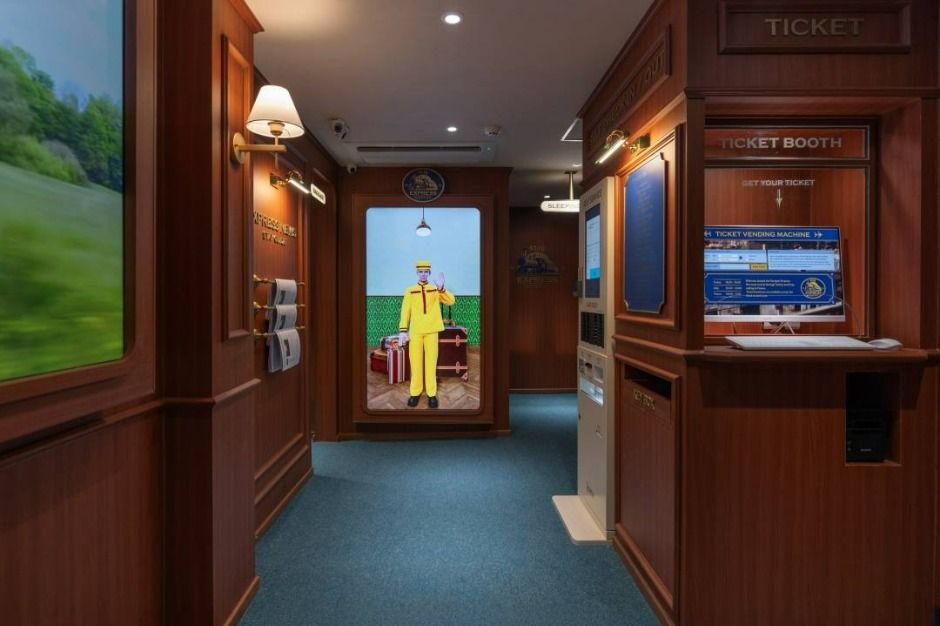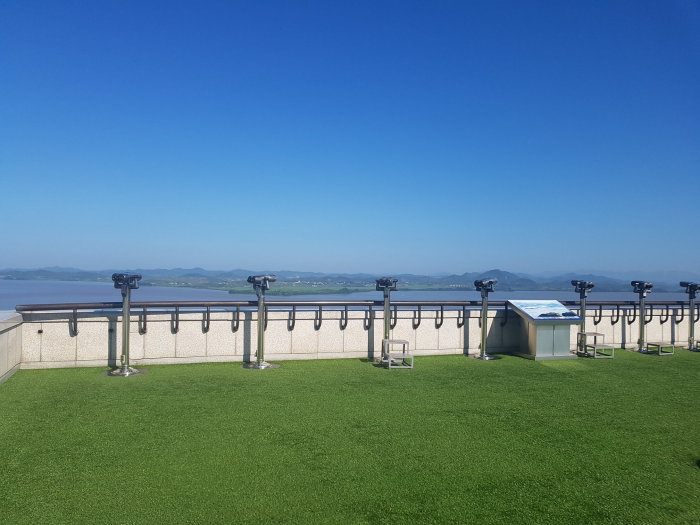LG Electronics - Dongincheon Branch [Tax Refund Shop] (LG전자 동인천)
18.0Km 2024-04-19
3, Injung-ro 108beon-gil, Jung-gu, Incheon
-
E-Mart - Dongincheon Branch [Tax Refund Shop] (이마트 동인천)
18.0Km 2024-04-22
134, Injung-ro, Jung-gu, Incheon
-
Stay Passport Express Spa Dangsan (스테이 패스포트 익스프레스 스파 당산점)
18.1Km 2025-04-09
92-1 Yangpyeong-ro, Yeongdeungpo-gu, Seoul
Stay Passport Express Spa Dangsan is inspired by European train trip and has a variety of rooms that sticks to the theme. Room types include COUCHETTE, which comes with a wine chiller and a turntable along with vinyl; SLEEPER 4-1 and 4-2, rooms with a turntable and a jacuzzi for four persons; and SLEEPER, a room with a turntable and a jacuzzi for two. The hotel has limited parking space so guests visiting with a vehicle are advised to inquire in advance for a nearby parking lot.
Chadeokbun Yeongjongdo Main Branch (차덕분 영종도본점)
18.1Km 2025-09-16
12, Eunhasu-ro, Jung-gu, Incheon
Located in front of Gu-eup Ferry Terminal on Yeongjongdo Island, Chadeokbun is a unique teahouse where you can enjoy a cup of tea while overlooking the sea. It offers a variety of teas, including cold tea, loose-leaf tea, and floral tea, along with distinctive treats such as red bean butter monaka, walnut-dried persimmon rolls, grilled rice cakes, and hojicha shaved ice with spun sugar. Once you place an order, the staff brings out a neatly prepared tray, and if you wish, they will also explain the proper way to enjoy the tea. Guests can choose between chair seating and floor seating according to their preference. The teahouse also displays tea-related items such as teacups and teapots, which are available for purchase. Those who visit before 11:00 a.m. can purchase the carefully selected “tea of the morning” and “treat of the day” at a discounted price.
E-Mart - Eunpyeong Branch [Tax Refund Shop] (이마트 은평)
18.1Km 2024-04-22
111, Eunpyeong-ro, Eunpyeong-gu, Seoul
-
ELITE Plastic Surgery (엘리트 성형외과)
18.1Km 2025-10-23
7th Floor, Entas Building, 593 Inju-daero, Namdong-gu, Incheon
Since its opening in 2007, ELITE Plastic Surgery has been a specialized clinic focused on anti-aging and lifting procedures, backed by over 19 years of accumulated experience and advanced medical expertise.
With extensive clinical experience and meticulous surgical techniques, we strive to bring out each patient's natural and harmonious beauty, aiming not only to enhance appearance but also to restore youth and confidence.
Through the collaboration of our plastic surgery and dermatology departments, patients who are hesitant about surgery can opt for non-invasive procedures such as laser lifting. It is also convenient to receive all desired treatments and procedures in one place.
We also offer a total care system for international patients, including interpretation services, accommodation, airport pickup, and personalized post-operative care.
Golfzon Market - Dangsan Branch [Tax Refund Shop] (골프존마켓 당산)
18.1Km 2024-04-23
1F, 233, Seonyu-ro, Yeongdeungpo-gu, Seoul
-
Himart - Dongincheon Branch [Tax Refund Shop] (하이마트 동인천점)
18.1Km 2024-04-18
129, Injung-ro, Jung-gu, Incheon
-
Odusan Unification Observatory (오두산 통일전망대)
18.1Km 2024-12-03
369 Pilseung-ro, Paju-si, Gyeonggi-do
+82-31-956-9600
Located in Tanhyeon-myeon, Paju-si, Odusan Unification Observatory was established to console the feelings of dispersed families and provide an educational site for the unification education through 5F to B1 in 1992.
The observatory is situated in the northernmost ceasefire line of the western front where the Hangang River and Imjingang River meet. It offers a wide view of Songaksan Mountain in Gaeseong to the north and 63 Building in Seoul to the south. Also, it is a valuable unification security tourist attraction related to Imjingak, the 3rd Tunnel, and Panmunjeom (Joint Security Area) stretching along Jayu-ro Road in the northeast.
Since its opening, almost 1,900,000 people have visited the observatory to feel the reality of the division, making this area the best national unification education site.
Aegibong Peak (Gimpo Section) (애기봉 (김포))
18.2Km 2025-01-08
139, Pyeonghwagongwon-ro, Gimpo-si, Gyeonggi-do
+82-31-988-6128
Aegibong Peak is located at the northern tip of Gimpo city about an hour’s drive from the downtown area. The mountain is where North and South Korea engaged in a fierce battle at the end of the Korean War; after the battle, Korea was divided into two nations. Since the peak is still a restricted area, visitors must present their passport in order to be admitted. From the peak, an open view of North Korean territory unfolds below and visitors can see South Korean territory as far as Songhaksan Mountain in Chungcheongnam-do.
![LG Electronics - Dongincheon Branch [Tax Refund Shop] (LG전자 동인천)](http://tong.visitkorea.or.kr/cms/resource/74/2882774_image2_1.jpg)
![E-Mart - Dongincheon Branch [Tax Refund Shop] (이마트 동인천)](http://tong.visitkorea.or.kr/cms/resource/75/2882775_image2_1.jpg)


![E-Mart - Eunpyeong Branch [Tax Refund Shop] (이마트 은평)](http://tong.visitkorea.or.kr/cms/resource/84/2889084_image2_1.jpg)

![Himart - Dongincheon Branch [Tax Refund Shop] (하이마트 동인천점)](http://tong.visitkorea.or.kr/cms/resource/76/2882776_image2_1.jpg)

 English
English
 한국어
한국어 日本語
日本語 中文(简体)
中文(简体) Deutsch
Deutsch Français
Français Español
Español Русский
Русский